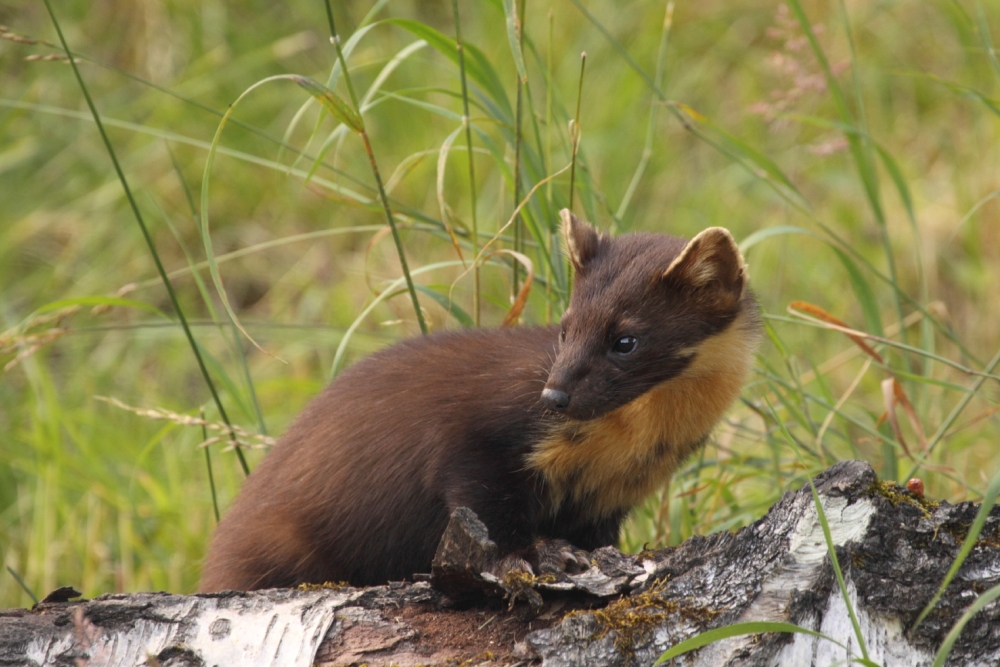Pine marten

Status
Native, locally common in parts of Scotland but very rare in England in Wales
Population
3,700
Scientific name
Martes martes
By 1800, due to loss of woodland cover, pine martens were rare in many lowland areas of Great Britain and Ireland; hunting and trapping by gamekeepers reduced numbers further through the 19th and early 20th centuries, and today they are still very rare. Pine martens are agile, cat-sized mammals, with dense, lustrous chocolate-brown fur and a distinctive creamy-yellow patch on their chest and throat. They are solitary and secretive, and are mostly nocturnal but are often active around dawn and dusk during the summer. They are skilful climbers and spend much of their time in trees, moving quickly between branches, but hunt on the ground. During the day, they rest on branches or in birds’ nests, or in burrows, amongst rocks. They are also strong swimmers. They have large territories that they mark with their droppings, which are often positioned in prominent places, such as the top of rocks, as a sign to other pine martens.
Head-body length: 36 – 55cm
Tail length: 20 – 25cm
Weight: 1 – 1.7kg
Lifespan: Up to 12 years
Reproduction
Mating occurs in late summer and females usually give birth to two kittens in April or May the following year. The young are born naked and blind, their eyes opening at 5 – 6 weeks. They leave the den at about four months. Pine martens do not successfully breed until between two and three years old, which means that populations are slow to increase.
Diet
Mainly voles and mice, but also rabbits, small birds, birds’ eggs, berries and insects.
Habitat
Woodland or more open ground with pockets of tree or scrub cover. In Scotland, natal dens are often in the roof spaces of buildings.
Predators
Fox and golden eagle may be main predators.
Threats
Habitat fragmentation and predator control.
Conservation status
GB Red List: Red list: Least Concern (LC); Critically Endangered (CR) in England and Wales. Least Concern (LC) in Scotland. Since 1988, they have been fully protected under Schedule 5 of the Wildlife and Countryside Act 1981.
Population size and distribution
GB population 3,700 (3,500 in Scotland). Locally common in parts of Scotland (the northwest) but rare in England in Wales. In England and Wales, records are concentrated to the northwest of the Humber-Severn axis and the population seems to be being maintained by breeding rather than new releases or escapes of captive individuals. The first pine marten reintroduction took place in Wales in 2015, led by Vincent Wildlife Trust (VWT), and supported by PTES , Chester Zoo and the Woodland Trust. Between 2015 and 2017, a total of 51 pine martens to mid-Wales.
Did you know?
Pine martens can leap up to four metres between tree branches and are adept are landing on their feet, unhurt, from heights of around 20 metres.
